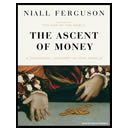The dot.com Bubble
 Bubbles are when a products value continues to rise beyond its true value. But what happens when the bubble inevitably bursts?
Bubbles are when a products value continues to rise beyond its true value. But what happens when the bubble inevitably bursts?
What are the types of economic bubbles? Intrinsic bubbles, informational bubbles, classic bubbles and fads are all the results of over valued products.
Tom Hadfield was only 12 years old when he set up the internet sensation Soccernet, by the time he was 17 years old he sold the company to ESPN for $40 million dollars.
Does the media fuel bubbles? The dot.com bubble wasn't just confined to the investment and trading community, the public also got involved, and this caused a media frenzy.
How was the dot.com market valued? The dot.com's equity was valued on visits and clicks. There was nothing to research, traditional valuing techniques went out the window.
Once the dot.com market started to crack, investors soon realized that these internet companies weren't really worth anything at all, but was this enough for them sell up before the bubble burst?
When bubbles bursts the immediate effect is damage to the public. But is there any longer lasting positive effect on the economy?
Is green technology the beginning of a new bubble? Can we spot a bubble emerging? Is there anything that can be done when a bubble does emerge?
You might also want to check out: Triumph of the Nerds: The Rise of Accidental Empires and Nerds 2.0.1: A Brief History of the Internet.




Cubic volume you mean. Answer -- r**3 times [8 minus (4/3)pi], r= half the side
if you put a bubble inside a cube what is the cubic area of the remaining corners of the cube?
the ad is so annoying, too many times in such a short time.
Bubbles can develop naturally (read: innocently) or super-naturally (read: manipulated). Either way the failure to properly attribute value to an item in a general sense is usually to blame. The Real Estate bubble was a manipulation in the price of real estate aided by the ability to finance anyone and anything. The con was in and many bought in. I believe the dot. com bubble was more a matter of no one understanding how revenue would be sustained in the web 2.0 - add to that the fact that wall street had no idea either so valuations were just made out of thin aire or a guess as to how the market would respond in the coming sustainment period. In either case, one has to ask themselves if the underlying asset and associated deal truly passes the common sense test. You can hype anything but at the end of the day, you have to show and tell. Much like the entertainment or music business...hype all you want, but you have to bring the goods at some point...good documentary
The problem is, the stock market was opened up to the general public but there was no platform to insure the genral public received the proper education to handle this endeavor.
What we ended up with was psudo-experts who provieded their slick sales pitches to convince people their opinion was informed which lead the lemmings off the cliff.
i think the real lesson of this doc has been missed by all posting here: innovation is more often than not funded into reality by speculative investment based on manipulative con games. the railroads, automobiles, commercial radio, airlines, television (first broadcast, then cable, and now the various forms of wireless), cellular technology, the internet all owe their iconic status in society to tribes of lemmings leaping off a cliff at the behest of "market makers". a lesser case can be made for the telephone and even common electric power. of course, speculative investment is pretty much the only driver for emerging technology, as there are no "historical fundamentals" to base decisions on. the "art" in speculation lies in dispassionate assessment of expansion characteristics, so that one can recognize the actual real time real world value being exceeded.
Reasonably enjoyable, although fairly typical OU production in that it lacked a degree of critical evaluation.
My biggest criticism was the repeated analogy to 'animal spirits' when clearly bubbles are very much human inventions.
It's also worth pointing out that the fees for OU modules have risen so sharply recently that they could be said to be forming a 'bubble' themselves...
The dot . com boom was a gold rush because of the potential exponential growth involved. Period. Here's a simple example:
Let's say you wanted to sell something online. Say... sex toys - not a bad idea since 98% of ALL searches were sex related at that time.
Let's say you tentatively believe you can capture or convert 1% of the online sex market...just 1, leaving 99% to your competition, so as not to over stretch your optimism. Multiply that figure by 5 (for your 5 year forecast). But don't stop there, don't forget to build in the exponential growth of online spending (i.e. your market) for each year. Suddenly you realise your company has an overnight value of at least $50 million before even selling a single product. Ludicrous? Ridiculous? Insane? Many didn't seem to think so.
By the dot-com stock system, one could have potentially made millions, using software such as the one hacktivists use to overload a webpage. The software would just have to limit the "refresh" so as not to crash it.
Wallstreet is the new Vegas